
Cradling is a fundamental lacrosse technique - running at full speed, changing directions and dodging defenders will all come much more naturally if you are comfortable carrying the ball in your stick. Poor lacrosse cradling limits other aspects of your game and can quickly lead to your team losing possession, so learning and practicing this crucial skill should be at the top of the list for players and coaches alike.
The technique comes naturally to some and requires lots of practice for others, but once you become comfortable with it, you'll be able to take your game to the next level! This article contains some handy lacrosse cradling tips to help you get the most out of your practice sessions.
Key Skills
1. Create the right pocket
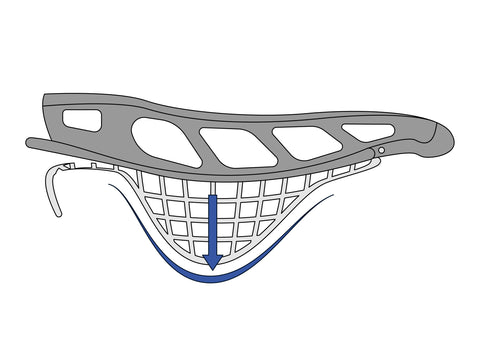
Creating a pocket is a careful balance between ensuring your pocket is deep enough so that the ball doesn't easily fall from your stick, or get knocked out by an opposing player, but not so deep that it is against the rules of lacrosse. If the referee notices your pocket is too deep you could get a penalty.
Check the depth of your pocket by putting a lacrosse ball into it. The ball should protrude beyond the rim of the head, but not too much. If you need to adjust the depth of your pocket, simply untie and retie the strings. A little tighter for a shallower pocket, a little looser if you need more depth.
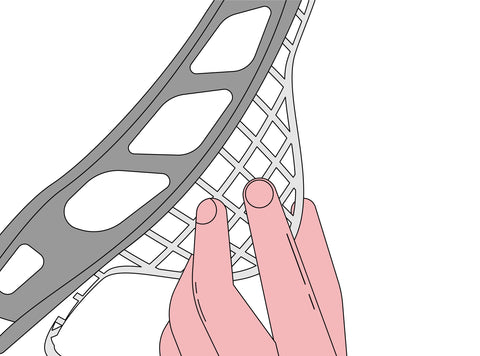
2. Basic cradling technique
The basic technique for cradling is all about hand position. Your dominant hand should rest midway up the shaft, between the shooting and catching positions, while your non-dominant hand should support the butt of the stick, taking the weight so that your dominant hand is free to slide up or down the stick if you need to quickly change position to make a catch, pass or take a shot.

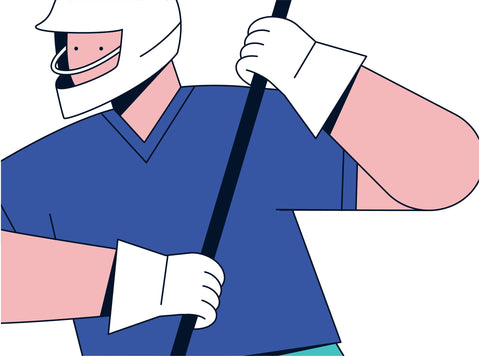
The stick should be parallel with your body, and at an angle to the ground of between 45 and 60 degrees, with the open side of the net facing towards the front.
Now, with your dominant hand, you'll curl your stick back and forth, applying a slight inward twist so that the momentum keeps the ball in the pocket.

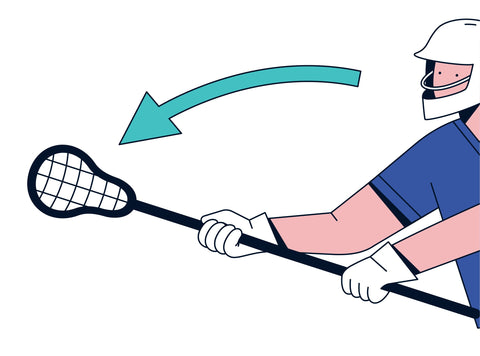
Start by practicing in place, and when you've developed your technique and feel more confident, move on to cradling as you run. Remember to keep your range of movement tight, and don't have your stick remain still for too long, as this is inviting an opposing player to attempt to knock the ball away from you.
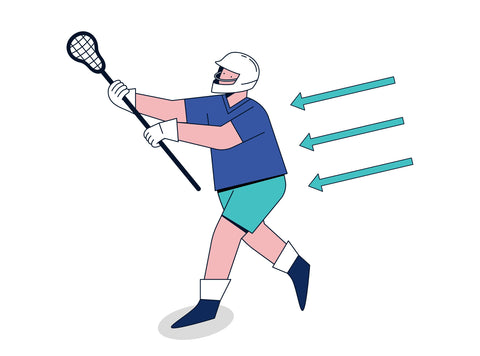
3. Switching sides while cradling
To be able to protect yourself from opposing players, you'll need to be confident in switching sides while cradling. It's a vital technique to allow you to quickly swap your stick from one side of your body to the other. The steps are simple, but you should practice until you can combine them into one fast and fluid motion.
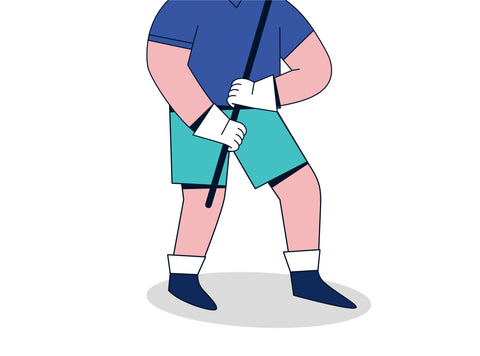
With slightly bent knees and your feet planted wide, bring your stick to a vertical position, with the open side of the head towards your face. Your dominant hand should be towards the top of the shaft at this point, but with a few inches of space between your hand and the head.

Now, swing the stick in a V shape, below your knees, and as it moves from one side to the other, switch the position of your dominant and non-dominant hands, allowing the dominant hand to slide to the base while the non-dominant hand moves towards the top of the shaft.
Now you're essentially in the opposite of the standard stance, with your hand positions flipped. It's important to practice in both the dominant and nondominant stances until you're as close to equally comfortable as you can be. It's hard to start with, but with plenty of practice it's achievable, and it'll make you a more versatile player.
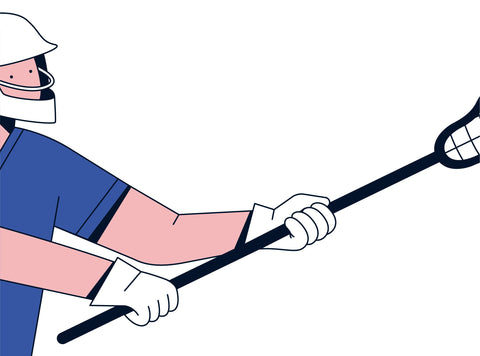
4. One-handed cradling
If you're under a lot of pressure from the opposition, you may need to switch to one-handed cradling. It's similar in principle to the two-handed version, but as you can't swing the stick, you'll need to apply a twisting motion with your wrist to keep the ball in the pocket.
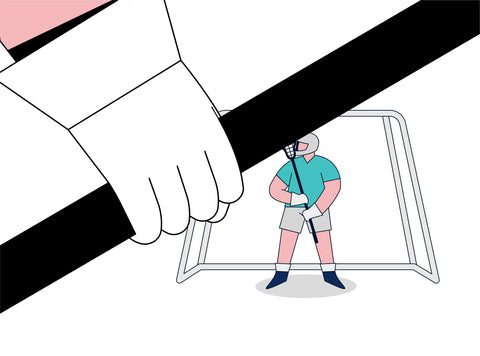
It also helps to match the motion of your stick to the timing of your stride. This will vary between individuals, but with enough practice, you'll work out the right rhythm for your running style.
One-handed cradling allows you to move down the field much more quickly, although it does mean it takes slightly longer to move into an attacking position, as you need to bring your other hand back onto the stick. As you progress, you'll learn how to combine the right mix of one and two-handed cradling depending on whether you need speed or stability at that moment in the game.
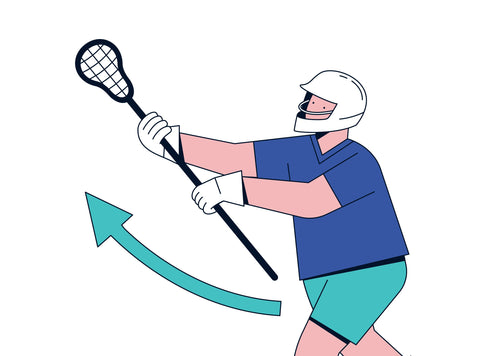
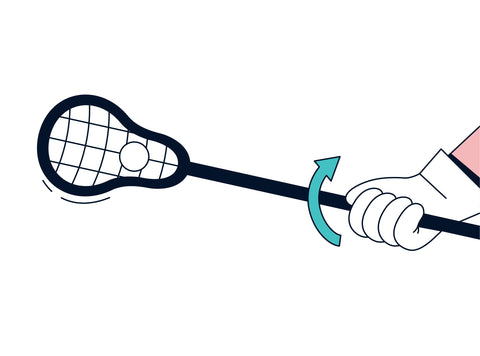
5. Passing and shooting techniques
The next thing to master is how to move from a catch into cradling the ball, and then how to move from cradling the ball into a shooting position.
For a catch, you should position your stick vertically, sliding your dominant hand up towards the head and allowing the stick to move back a little to deaden the momentum of the ball and stop it bouncing out. If you've moved your hand up smoothly enough, you should be able to fluidly return the stick to the normal 45-60 degree angle and start cradling the ball.


To go from a cradle to making a pass, or taking a shot, you need to continue the last cradling movement a little further, curling the stick right round so the open side of the head is facing forwards (or the specific direction you want to pass or shoot). Then, slide your top hand down the shaft as you pull the stick over your shoulder, and then in one smooth movement whip it forwards to release the ball from the channel. The more you practice, the greater your speed, power and accuracy will become.
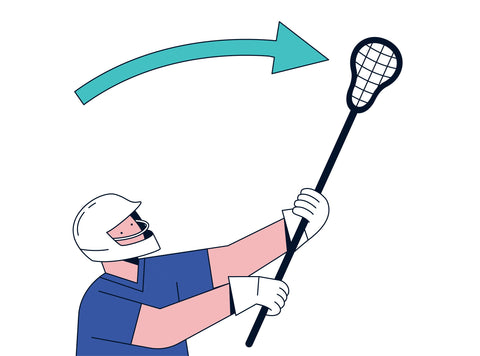
So there you have it - some basic things to know about how to cradle in lacrosse. All that's left to do is to grab your stick loosely (soft hands, shoulder-length apart, top hand dominant), and get practicing!
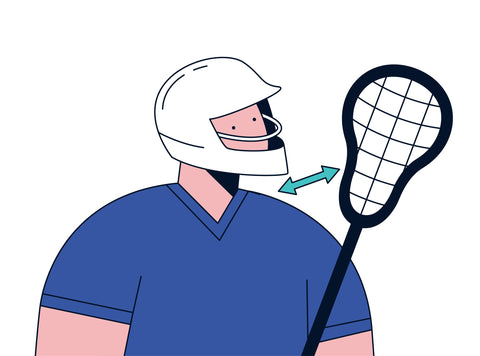
How do you teach lacrosse cradling?
For coaches, cradling is one of the first skills that you'll want to work on with your players. Proper hand positioning is key, so make sure your players know how to cradle a lacrosse stick in their hands. It should not be either in the palm or the fingertips - that middle area where fingers connect to palms allows for the best control and 'soft' hands. The top hand will be dominant, providing control and direction in the movement while the bottom hand keeps things stable. Always ensure that your players are aware not to 'choke' the stick - a loose, soft-grip allows for a more fluid movement.
To get your players used to the movements required for cradling, there are some basic lacrosse cradling drills you can do at practice. First, have players try running down the pitch with two-handed cradling. Encourage them to use the natural movements of the body to curl the stick back and forth in rhythm with their feet - any jerky or unnatural movements will quickly dislodge the ball from the pocket. This can take a lot of practice for beginners, so continue training these movements until they are able to run at least 20 meters without dropping the ball.
As players begin to get comfortable with the technique, you can progress to one-handed cradling, which is better to protect the ball as a player can use their body as a shield for the stick. It is important to teach players to lock their non-cradling arm in place during this drill - to avoid warding penalties during matches - and to keep the stick parallel and as close to their body as possible.
Now, players are ready to receive some light defensive pressure. As the player in the possession is running while cradling the ball, have a defender approach from one side. Here, you must ensure that the player keeps his body between the ball and the defender, and practices cradling whilst avoiding attempts to knock the ball from the pocket.
How do you practice cradling lacrosse?
As a player, cradling will eventually become second nature. But only with plenty of practice! Aside from hitting the field, here are a few other things to consider when learning how to cradle a lacrosse ball:
It is best to cradle the ball close to your head. This is because defenders are penalized for hitting your helmet, so they are less likely to risk trying to dislodge the ball if you keep it close to yourself. While it is easier to carry using horizontal cradling, meaning that the stick stays parallel to the ground, this also makes it much easier for opponents to knock the ball out! Practice the harder skill of cradling vertically for better attacking play. To find the right 'rocking rhythm when you practice cradling, use the natural swing of your body. As your left foot comes forward, curl your bicep and wrist to swing your right arm back. Follow this opposite arm, opposite foot pattern to build a natural movement into your cradling, and you will find that it comes automatically in time.
Is cradling a rule in lacrosse?
There are certain lacrosse cradling rules, mostly around the depth of the pocket on your stick. In men's lacrosse, players are usually required to use deeper pockets, while the women's game uses shallower ones. When you put a ball in the net of your stick, it shouldn't be nestled completely below the plastic rim of the pocket - that would make it too easy for you to carry the ball and give an unfair advantage! Make sure you adjust your net so it falls within the rules of the game, and use cradling to carry the ball effectively.
So there you have it - some basic things to know about how to cradle in lacrosse. All that's left to do is to grab your stick loosely (soft hands, shoulder-length apart, top hand dominant), and get practicing!









Leave a comment (all fields required)